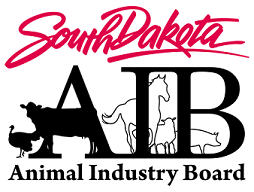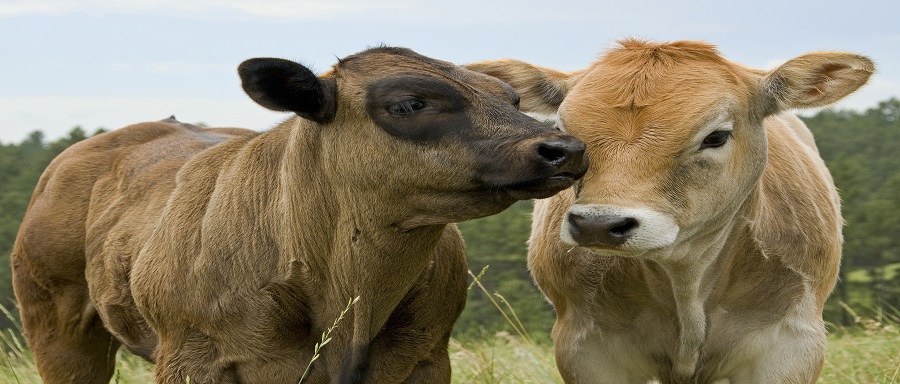Cattle
Brucellosis
Brucellosis in cattle is an infectious disease caused by the bacteria Brucella abortus. The disease, also known as "Bang’s disease", causes abortions and stillbirths in cattle. It can be spread between animals and also to humans through contact with milk, the aborted fetus, or other reproductive tract discharges. Bison and elk can also be infected with and transmit brucellosis.
Since 1934, the U.S. Department of Agriculture (USDA), livestock industry and state animal health agencies have worked on eradicating brucellosis from livestock. All states are now free of brucellosis in domestic cattle herds. Bison and elk in the Greater Yellowstone Area (GYA) remain a reservoir of infection. The three states bordering the GYA have established Designated Surveillance Areas (DSAs) around their portion of the GYA where they manage the risk of exposure to cattle using high levels of surveillance and appropriate disease response when brucellosis is found in a herd.
Additional Links:
Brucellosis Fast Facts
Merk Manuals - Brucellosis in Cattle
Brucellosis Vaccination Form Fillable VS Form 4-26
Brucellosis Test Record Fillable VS Form 4-33
Bovine Tuberculosis
Bovine tuberculosis (TB) is a contagious disease caused by the bacterium Mycobacterium bovis. The disease has the ability to spread between livestock, wildlife and humans. A State-Federal Cooperative Bovine TB eradication program was established in 1917 and has been successful in nearly eradicating Bovine TB in the US. The United States Department of Agriculture (USDA) has recognized South Dakota as "Bovine TB Free" continuously since 1982.
The SDAIB continues to work with USDA and industry to prevent the entry of TB into SD and to detect and eradicate the disease if it should appear in the state. Any cattle coming into SD that may have an increased risk of being infected with TB must meet additional pre-entry testing requirements.
State/federal veterinarians conduct follow-up testing on any South Dakota cattle that are found to be suspect during routine TB testing by private herd veterinarians. Also, state/federal meat inspectors examine all animals for evidence of TB at slaughter. Any suspicious lesions are collected and sent to a federal diagnostic laboratory for testing. If TB is found in a SD origin animal, an investigation is initiated to find the source of the animal and if there are any exposed animals.
Additional Links:
Merck Veterinary Manual – TB infections
Tuberculosis Fast Facts
Tuberculin Orders: As of January 1, 2019 all requests for tuberculin should be sent to NVSL using the information and orders forms in the links below.
Anthrax
Anthrax is a serious zoonotic disease that can affect most mammals and several species of birds, but is particularly important in herbivores. This disease is caused by a spore-forming bacterium, Bacillus anthracis. Anthrax spores are extremely resistant to inactivation by heat or chemicals, and can survive in the environment for decades. Susceptibility to clinical disease varies, with domesticated and wild ruminants most susceptible, horses somewhat less susceptible, and omnivores and carnivores relatively resistant. Anthrax is not spread by animal to animal contact like many other livestock diseases. Rather, anthrax spores in the soil are likely ingested by livestock while they graze on pasture. In South Dakota, anthrax can be a serious problem in unvaccinated ruminants. The course of disease is usually rapid in these animals, and symptomatic infections are often fatal.
Protocol when anthrax is confirmed on a South Dakota farm:
- Herd placed under quarantine - the quarantine can be released 30 days after proper disposal of the last carcass.
- Immediate disposal of carcasses by burning and burial.
- Vaccinate and treat herd as advised by the Animal Industry Board and private veterinarian.
Additional Links:
Johne's Disease
The revised and updated Uniform Program Standards for the Voluntary Bovine Johne’s Disease Control Program developed by USDA and the US Animal Health Association went into effect on September 1, 2010. The purpose behind the revisions is to improve the accuracy of herd classification and to provide a system that is easier to understand and follow.
Herd classification Level 1-6 is based on test type, test results, and herd size, and takes statistical probabilities into consideration.
The system allows herds with low prevalence to participate in the herd classification component and also allows for the use of new testing strategies (pooled fecal culture, direct PCR, milk ELISA). In this system, the higher the classification level, the lower the risk of that herd transmitting Johne’s Disease. Herds with a current Johne’s disease certification status in the old program were evaluated and grandfathered into the new system with a current classification level.
Additional Links:
USDA Pamphlets
USDA Johne's Disease Pamphlet
Johne's Disease Q & A for Bovine Producers Brochure
The Cost of Johne's Disease to Dairy Producers Brochure
Johne's Disease Information Websites
Johne's Information Center (University of Wisconsin)
On-Line Johne's Disease Courses for Producers (Beef, Dairy, Goat, Sheep, Deer & Elk)
SD AIB Johne's Herd Classification Forms
Application for Status as a Johne's Classified Herd
Johne's Disease Risk Assessment and Management Plan For Beef Herds
Johne's Disease Risk Assessment and Management Plan For Dairy Herds
Trichomoniasis
Trichomonas foetus is transmitted between cows and bulls during breeding, and can result in early term abortions. Producers are often unaware of the problem until the disease is well established in the herd. Signs that the disease may be present in a herd include a high number of open cows, cows showing signs of heat when they should be pregnant, and the presence of many late-calving cows.
Pregnancy rates are often only slightly affected when trich is initially introduced into a herd and may be incorrectly attributed to other factors. Many times a lower than expected pregnancy rate is attributed to last summer’s poor bull performance, injured bulls, hot weather, poor cow condition or any number of other factors. If trich is not seriously and routinely considered, subsequent breeding seasons could be extremely affected with up to 50 percent or more open cows. The longer the disease goes undetected in a herd the more likely is it to have spread. Although it can be a financially devastating disease for producers, it seems to be one that is not readily thought of unless there is a history of the disease in the area or within the herd.
The Animal Industry Board investigates all positive herds by working with the producer and their veterinarian to eliminate the disease. All adjacent and epidemiologically linked herds are notified and evaluated for risk. It is recommended that these herds individually test all bulls by PCR. For known positive herds, or herds known to have commingled with a positive herd, multiple individual tests may be required if bulls are to be retained for breeding. Samples should NOT be pooled when testing these herds.
Producers can take precautions to help prevent their herd from becoming infected. First, only purchase and use virgin bulls for breeding. If non-virgin bulls are purchased, they must be tested negative for Trichomonas foetus prior to breeding. Timely pregnancy testing of females and prompt removal of open cows to be sold for feeding and slaughter will also decrease the risk of disease spread. Finally, maintain good border fencing to help keep livestock in their respective pastures and avoid unintentional commingling of animals.
In cooperation with the cattle industry the South Dakota Animal Industry Board has implemented rules in an effort to help prevent trichomoniasis in cattle:
- Non-Virgin bulls must be tested negative for trichomoniasis prior to being sold, loaned or leased in South Dakota for breeding purposes;
- Any non-virgin bull entering South Dakota must be tested negative for trichomoniasis;
- No non-virgin and non-pregnant female cattle may imported, loaned, leased nor acquired for breeding purposes in South Dakota
Cattle producers with concerns about trichomoniasis should contact their herd veterinarian or the South Dakota Animal Industry Board at 605.773.3321.
Additional Information
Official SD Trichomoniasis Rules
SD Trich Pamphlet
SD Trich Poster
SD Trich Maps: FY2019 FY 2018 FY 2017 FY 2016 FY 2015


For Additional Information
Please Call 605.773.3321